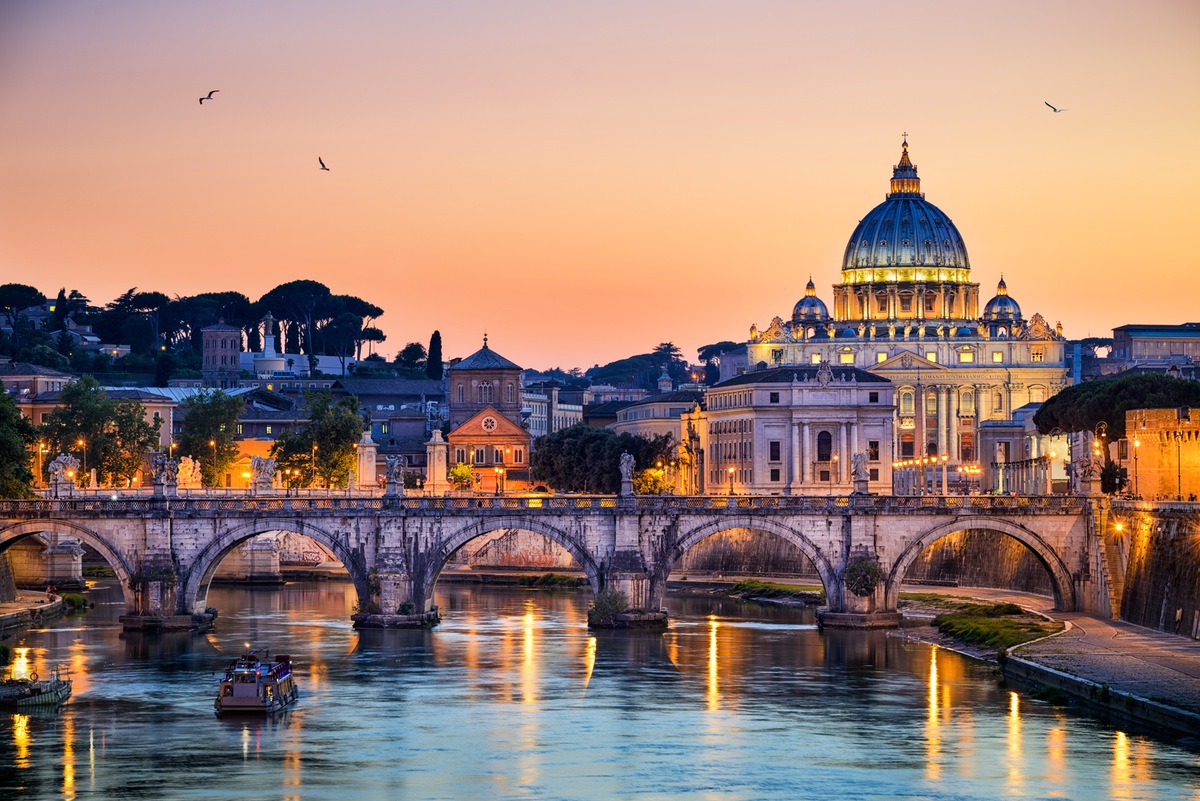Summer in Florence Excursions
 Ciao a tutti,
Ciao a tutti,
We are excited to fill you in on some of the cultural events and excursions you will be participating in during your summer session in Florence! You will gather together as a group to enjoy a welcome meal soon after your arrival in Florence, so be sure to bring your appetites, as there is always an abundance of food!
Chiara and Alessandro have spent a lot of time in Florence and know the best of the best! While you are there they will be helping you to have a true Florentine experience by hosting a number of La Vida Local activities. Past activities have included market visits around Florence, a visit to the mountain town of Fieosle to see where medieval royalty went on vacation, a cooking class, a visit to Maiano Farm for an oil tasting, and “Best Gelato Experience” in Florence, or San Miniato hike, if weather permitting. A calendar of your CISabroad summer activities and excursions will be provided approximately a week prior to your arrival.
Being in Florence alone is a piacere mondiale, but we think it’s important for you to stretch your wings out and enjoy the other gems Italy has to offer.
Included through Florence University of the Arts are two one-day educational field trips per program. You may sign up for additional field trips at an additional cost. For details about some of these programs, please see below. Find more information about other excursion locations on FUA’s website.
*Please note that some one-day field trips may not be offered during, and/or included, for your program session. See this link for FUA’s schedule of locations that will be available in your program.
A Day at the Spa in the Tuscan Hills
This is an activity that combines a direct connection of nature and ancient traditions with history. Tuscany has many natural hot springs across its territory, from the Lunigiana in the north to the Val d’Orcia in the south.
Some of these thermal baths, most likely well known even in Etruscan times, were definitely enjoyed by the Romans as testified by a plaque located under the arcade of a church in one of those locations, which indicates the consecrating of these waters to the Nymphs.
Other locations, thanks to their close vicinity to Via Francigena, an important thoroughfare, which connected northern Europe to the Italic peninsular, became more and more popular during the medieval period.
Due to specific characteristics of some areas of Tuscany, some springs surge out of the ground even at 48°C (118°F), which permits bathing in fall and winter.
Bologna: The Capital of Education and Food
Bologna is a multifaceted city of art, culture and commerce, with a streamlined trade-fair organization, a well-known manufacturing and motor tradition, and a famous 40 km long arcade-lined walkway, the longest in the world. In the Italian tradition, the city is often called “the Learned” as the first Western university was established there in 1088, and “the Fat” for its food tradition.
Bologna is also a “UNESCO creative City of Music” and has one of the largest and most well-preserved medieval historical centers. Its arcades are in the running to be included in the UNESCO World Heritage list. Home to many renowned artists such as Giorgio Morandi, the Carraccis, and Guercino, its charm has also inspired notable people like Mozart, Dante, Gioacchino Rossini, and Guglielmo Marconi, winner of the Nobel Prize in Physics.
The city is particularly known for the Asinelli tower (98 mt) and its neighboring “twin” Garisenda (48 mt, which is also mentioned in Dante’s Inferno). Bologna is a synonym for its food and wine traditions. Mortadella, “ragù alla Bolognese,” handmade pastas such as tortellini, lasagne and tagliatelle, boiled meat, and certosino cake are just some examples of the foods that make the gastronomy of Bologna famous throughout the world, along with its fabulous “sfogline” (the women who produce handmade pasta).
Cinque Terre: Hiking Between the Sea and Sky
This territory lies along the Ligurian coast (northwest of Florence) and consists of 18 kilometers of rocky coastline abounding with bays, beaches, and deep sea, and surrounded by mountains running parallel to the coast. Terraces of land cultivated with vineyards and olive trees are supported and contained by old dry stone walls. Paths and mule trails look onto breathtaking views. The Five villages (Cinque Terre), Riomaggiore, Manarola, Corniglia, Vernazza and Monterosso all face onto the sea. An environment in which centuries old work of generations has transformed an inaccessible territory into a landscape of extraordinary beauty. It is a Natural Reserve, declared World Heritage of Humanity by UNESCO in 1997.
Massa Marittima and the Coast
The territory of Massa has been inhabited since prehistoric times, as the remarkable findings, in the areas around the City called Monacelle and Tane, have shown. Both the Etruscan and Roman period have left important traces in the area.
The name Massa m eans fairly large mass of property and until the unification of Italy, it was only used to identify the city. No other name was used except, occasionally, Metallorum, to indicate the primary activities of the Free City, or Marittima to indicate the maritime position in Maremma.
eans fairly large mass of property and until the unification of Italy, it was only used to identify the city. No other name was used except, occasionally, Metallorum, to indicate the primary activities of the Free City, or Marittima to indicate the maritime position in Maremma.
The town is located in a scenic position: from its hills you can admire Golfo di Follonica (one of the most beautiful seaside areas of Tuscany), and see as far as Corsica and Elba Island.
The activity will include time spent in one of the seaside locations of the Golfo, where crystal waters, ancient ruins and majestic pine trees create an atmosphere suspended in time.
Pistoia and Prato
Discover the roles that the Tuscan cities of Pistoia and Prato have played over the centuries in the design, development, and manufacturing of Italian products. As two of the major towns in Tuscany, the histories of Pistoia and Prato is strictly connected to that of Florence. Both cities are rich with medieval and Renaissance history. The cities still possess well-conserved historic centers rich in art, monuments, churches, and palaces, and are known for typical local products. In Pistoia, the production of light industry (furniture, food, footwear, textiles, and mechanical products) has its roots dating back to the 16th century. Prato, the second largest city in Tuscany, has been historically renowned for its textile industry. Prato is also home to the Textile Museum which boasts samples and documents dating from the 5th century to the current day.
 Venice: The Impossible City
Venice: The Impossible City
Considered one of the most romantic cities of the world, Venice is made up of a collection of more than 110 small islands, connected by a web of canals and bridges. The city appears to be floating in the Venetian lagoon, calm and serene yet oddly threatened by the nearby Adriatic Sea. Influenced by both eastern and western cultures, this once bustling part city has tons to offer visitors from all walks of life.
Rome Eternal City 
Rome is without doubt one the most beautiful citi
es in the world; every year millions of tourists come from around the world to admire the treasures and masterpieces of Roman art and architecture. No other city comes close to the richness of Rome. It may no longer be Caput Mundi (capital of the world), but Rome is an epic, bubbling-over metropolis harboring lost empires. One visit and you’ll be hooked. Rome has a glorious monumentality that it wears without reverence.

For more pictures of students on excursions, please see the CISabroad Italy Facebook page.
